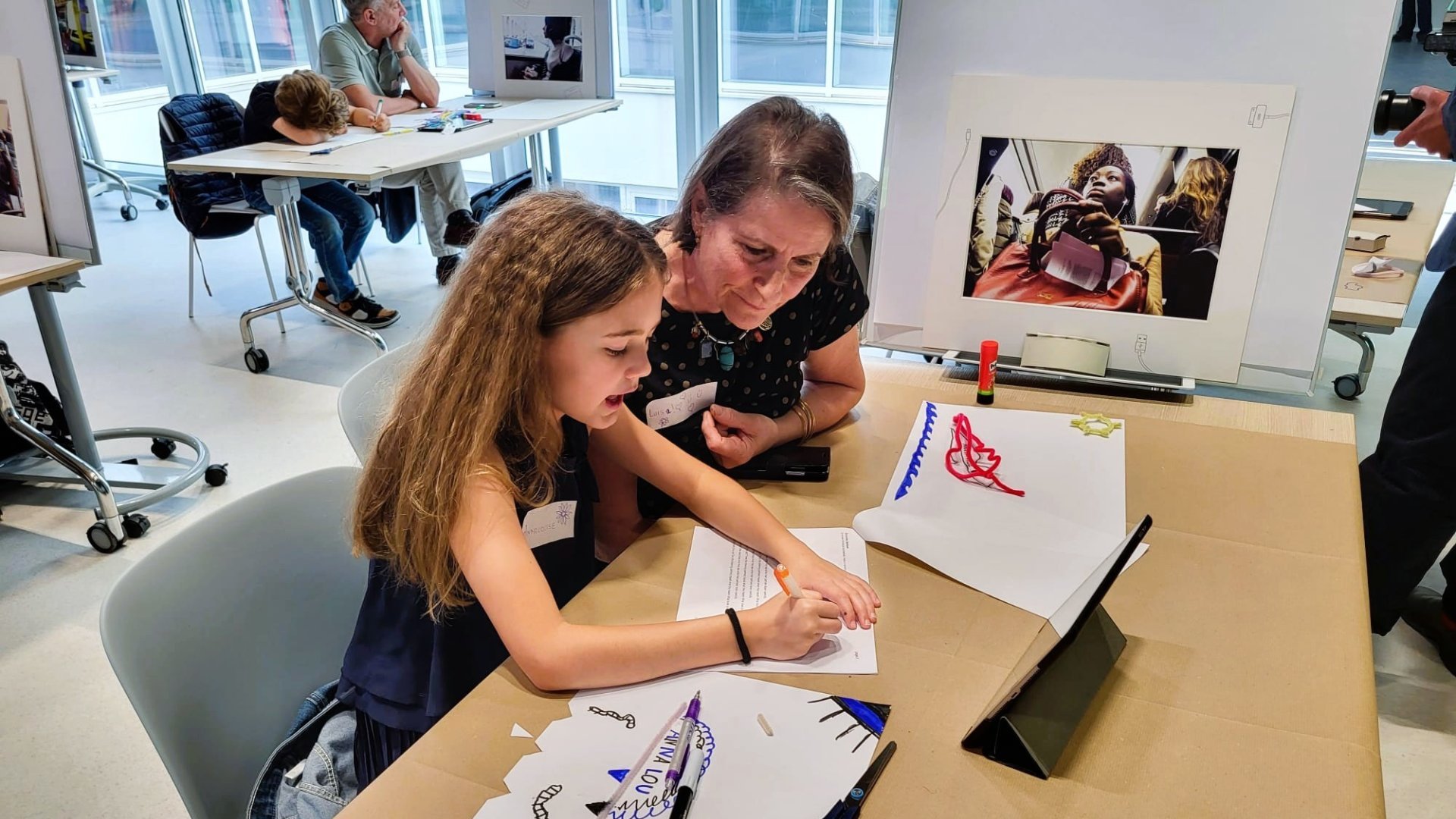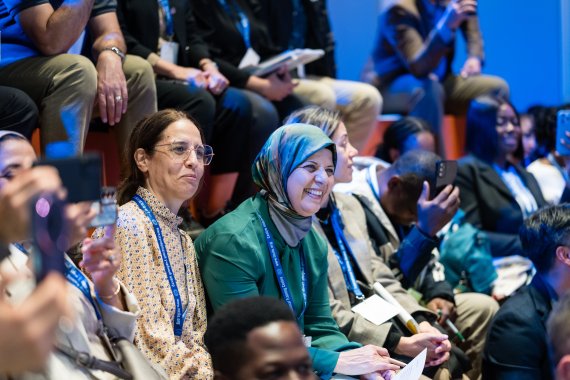The future of learning is learning from each other
The future of learning is learning from each other
Exploring intergenerational foresight at ITCILO, with designer Cas Holman
23 September 2025
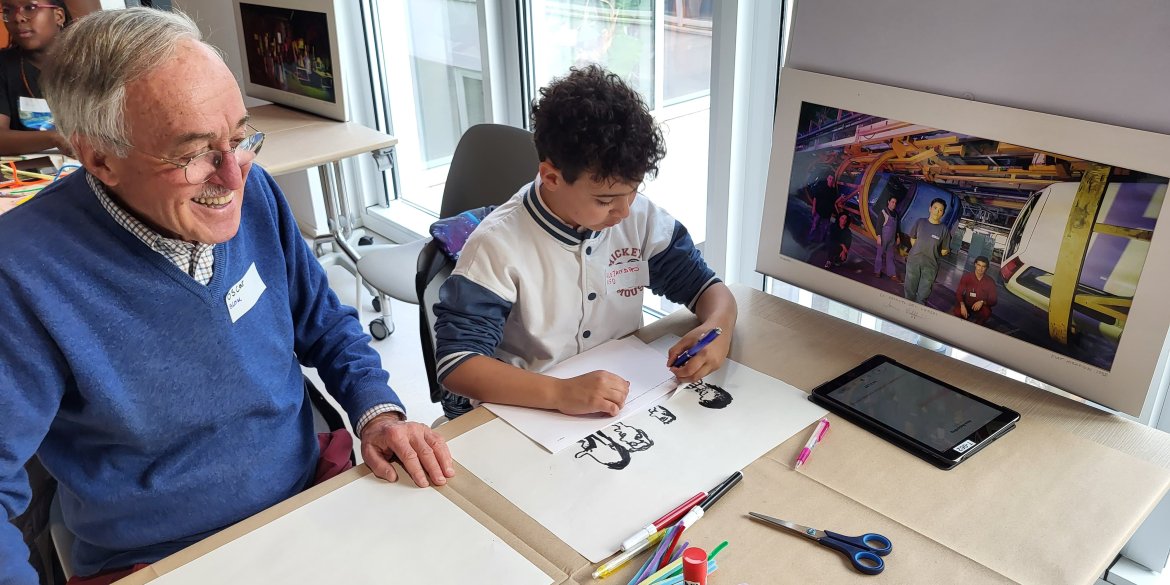
The future looks different depending on who you ask. To some, it is anchored in memory and lessons from the past. To others, it begins with imagination and possibility. Bridging these worlds calls for listening across divides, including the divide of age. Guided by this idea, the ITCILO piloted an intergenerational foresight workshop, where children as young as eight worked alongside adults over sixty-five to explore the future of learning and work.
In a world increasingly defined by complexity, polarization, and rapid change, creating meaningful spaces for dialogue across generations is more vital than ever. Intergenerational dialogue was a central theme at the United Nations Summit of the Future, held in New York on 22-23 September 2024. The summit emphasized the importance of fostering collaboration between generations to address pressing global challenges and build a more sustainable, inclusive future. One of its key outcomes, the Pact for the Future, calls on all stakeholders to strengthen intergenerational bonds and embed long-term thinking into policymaking.
The experiment: a new kind of dialogue
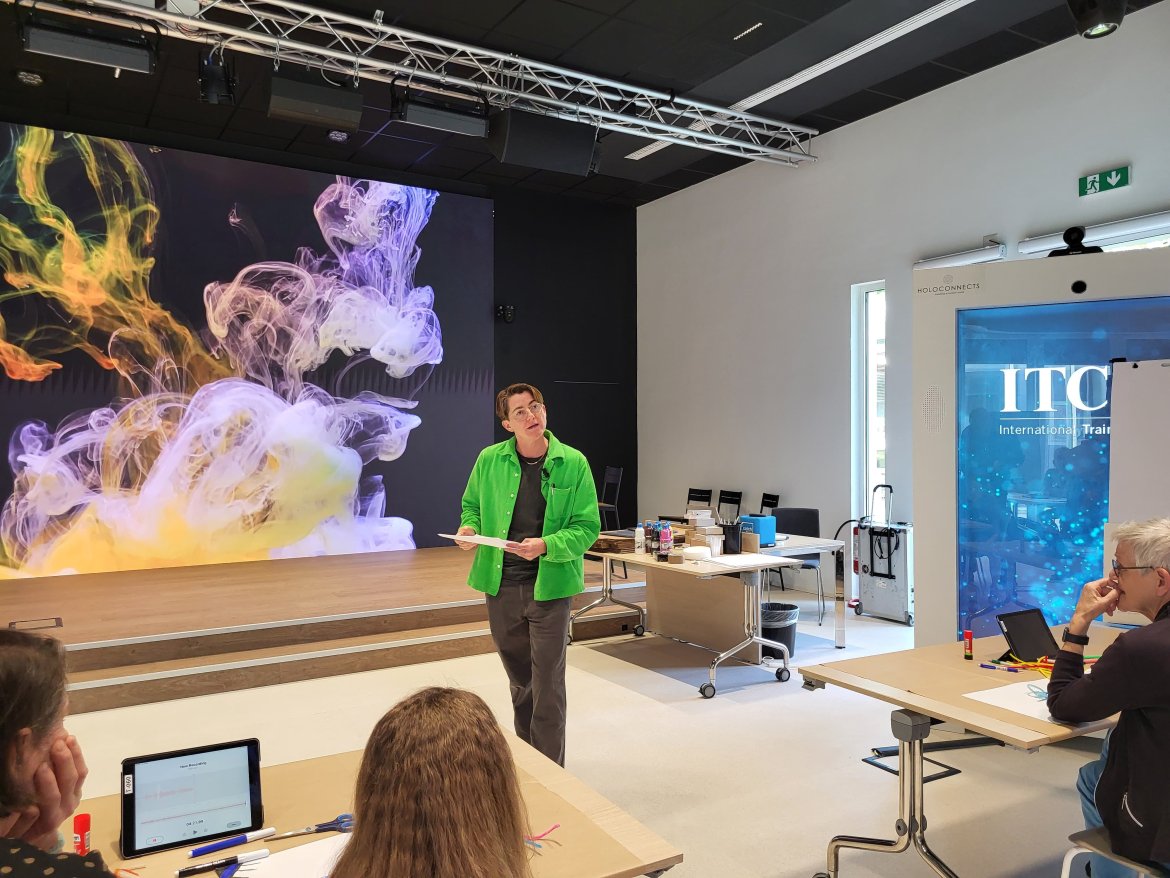
The workshop brought together children and older adults in an encounter guided by Cas Holman, a designer known internationally for her work on creativity and unstructured play. Holman described her role as setting the stage rather than dictating outcomes. “I don’t design play, I design for play,” she explained. Her goal is not to prescribe results but to create the conditions for exchange: “Everything I design is for people to understand each other."
That openness also resonated with Fabio Nascimbeni, who works on digital inclusion and learning innovation at the European Training Foundation (ETF). He highlighted the value of Holman’s approach: “What I like very much about it is that it is quite agnostic on the future. She says: we don’t know what the future of learning will be, we don’t know what the future of work will be.”
Learning each other meant stepping away from fixed roles. A child might lead with imagination, an older adult with memory and perspective. Neither view was complete on its own, but together they created something neither could have reached alone. One older participant reflected: “Children don’t answer the way you expect. You have to stop, listen, and try to see what they really mean.” A child, in turn, described the novelty of the encounter: “At school I just talk with my friends. Here I got to speak with someone older. We had disagreements, but it was cool. I felt heard.”
Methodology as message
“What do you see?”
With that simple question, pairs of children and older adults began interpreting photographs by Mauro Raffini. Each described what they noticed, then listened as their partner repeated it back. The exercise showed how the same image could be read in very different ways, setting the tone for the workshop.
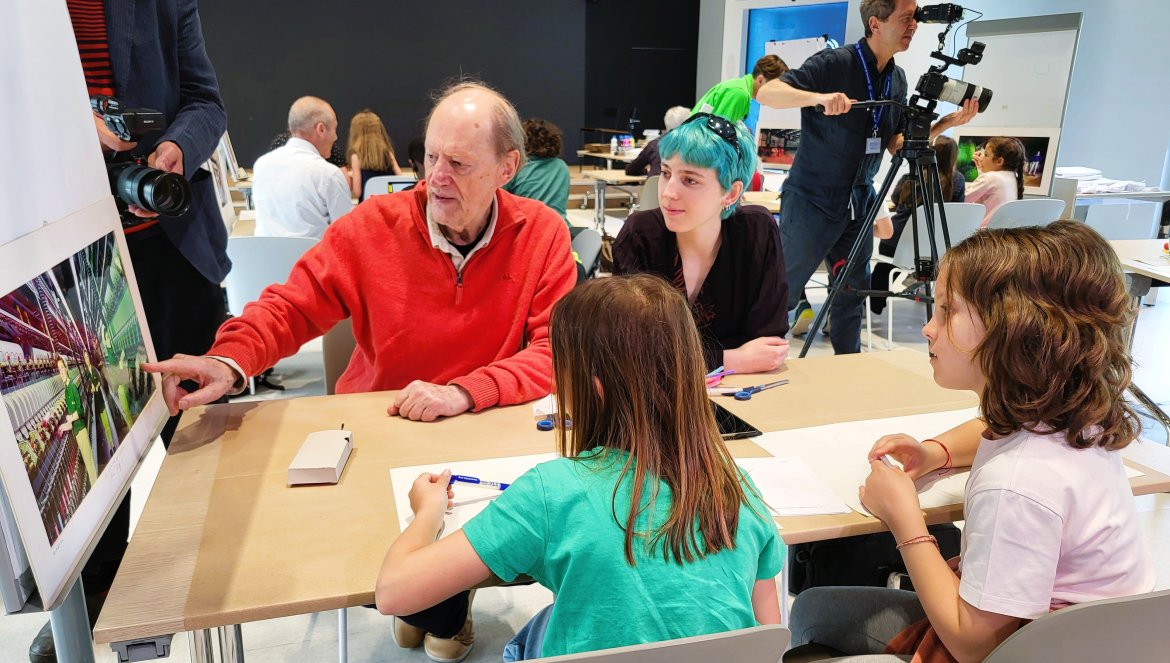
From there, participants moved into more open-ended activities. They sketched the schools of the future, designed tools for the jobs of 2040, and performed short skits imagining how people might learn or work in the years ahead. Materials were deliberately simple—paper, cardboard, markers—so that ideas could take shape quickly and visually. “When you use your hands, your mind is inspired differently. You can communicate things you can’t always express in words.”
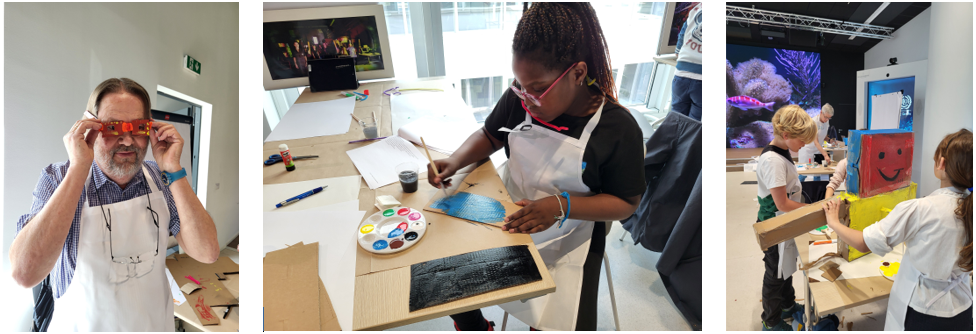
As Holman explained, this was part of creating a non-hierarchical space. There was no expert in the room, no single right answer. Instead, every contribution mattered. These exercises bypassed the formal barriers of age, expertise, and vocabulary, inviting participants to meet each other on equal ground. Through this approach, we were not just collecting insights, but modeling a new kind of learning system: one that values empathy, interdependence, and the long arc of human development.
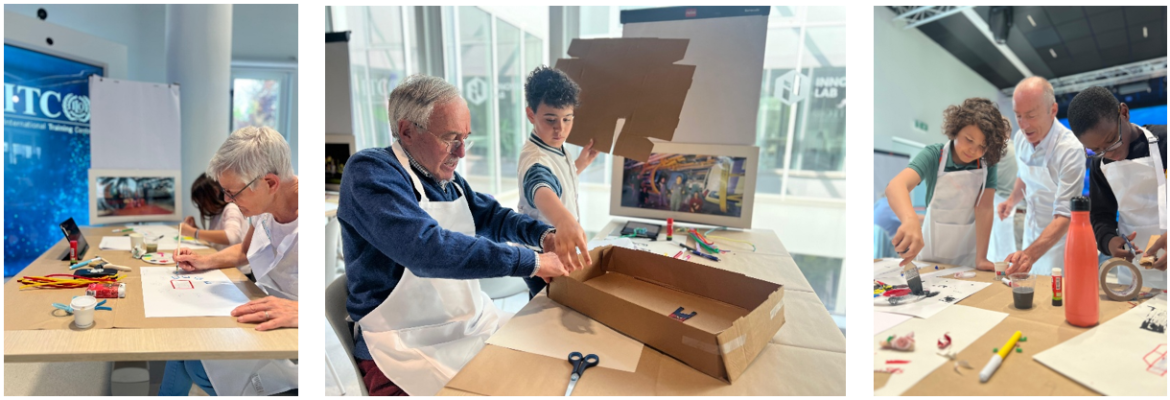
Why intergenerational dialogue matters
There are several reasons why intergenerational dialogue deserves more attention in the context of global development, innovation, and foresight.
4 key points
1. Long-term thinking
Older generations bring memory, continuity, and lessons learned. Younger generations bring awareness of emerging trends, technology, and planetary urgency. Together, they create a fuller picture of past mistakes and future opportunities.
2. Breaking echo chambers
Generational silos can limit perspectives and reinforce narrow ways of thinking. Dialogue across age groups breaks these echo chambers, exposing assumptions and generating more creative, inclusive solutions.
3. Building social cohesion
At a time when societies are fractured by identity politics, economic inequality, and digital disconnection, intergenerational exchange builds empathy, mutual recognition, and shared purpose.
4. Redisigning systems
From education and work to governance and climate action, systems that serve the future must include the voices of those who will live it, while drawing on the wisdom of those who have seen systems rise and fall.
Steven Vosloo, a digital policy and foresight expert at UNICEF Innocenti, explained why this matters for decision-making. In specific fields, he noted, change moves faster than the evidence. “In fast-moving areas like AI, the data you need for good policy isn’t available yet. That’s why it helps to engage in foresight, to scan emerging trends and explore different scenarios.”
For Vosloo, the value of foresight is not prediction but openness. “If we only look backwards, we expect the future to look like the past. But history shows us that disruption happens, and the future can take a very different turn.” He added that Cas’s own framing, moving from problem-solving to opportunity-finding, reflects this shift. By being open to unexpected outcomes, foresight creates the conditions to see possibilities that data alone cannot reveal.
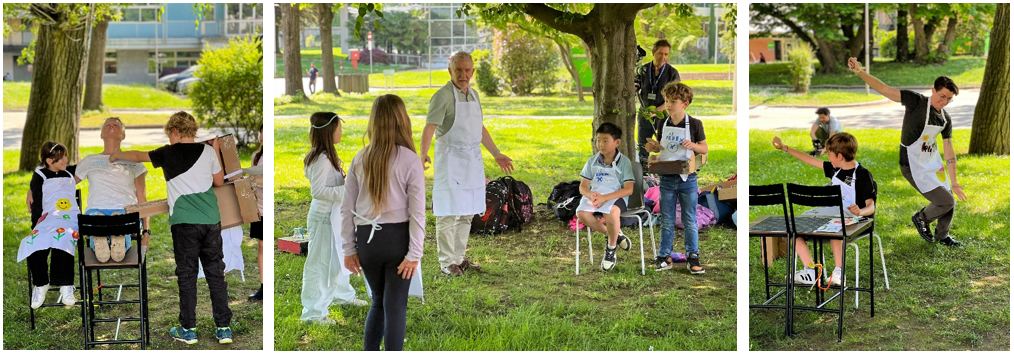
A call to action
If the Pact for the Future teaches us anything, it is that the future must not be built for the next generation, but with them—and alongside those who came before.
We invite others in the international development and learning community to explore the potential of intergenerational foresight as both method and mindset.
We believe that when 8-year-olds and 70-year-olds sit at the same table to imagine the future of learning and work, something extraordinary happens. Not only do we begin to see the future differently, we begin to see each other differently. And perhaps that is the most powerful innovation of all.
Catch the story in motion.
Press play to start.
